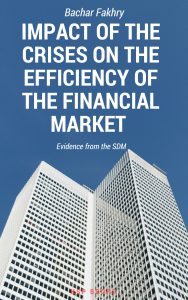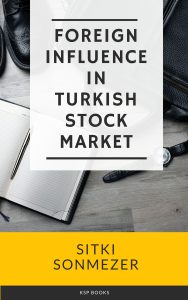Synopsis
This chapter (I) We celebrate the 20th anniversary of the introduction of the Euro by reviewing one of the key elements: the integration of the Eurozone financial markets. Introducing a multivariate volatility test based on the asymmetrical BEKK (ABEKK) multivariate GARCH model of volatility to analyse the stable market pre-condition hypothesis of the integrated Eurozone equity markets across the euro’s timeline. Extending our analysis to the impact of the rise of the populist political movement on the Eurozone financial markets during the last few years. The first and most important contribution is the introduction of a multivariate volatility test based on the ABEKK to analyse the stability of the integration in the Eurozone equity markets. However, another key contribution is the analysis of a period where the whole concept of European integration is coming into question by the rise of the populist political movement. This research could be of importance to the ECB in stabilising the Eurozone financial markets as well as market participants in portfolio optimization within the Eurozone. Our results point to a difference in financial market integration depending on the definition. The empirical evidence found that market participants tend to react differently according to the affinity of the market participants to the event/news. In essence, market participants are driven by the “time and space” effect. This would point to evidence that the Eurozone equity markets was never truly integrated in the econometrics sense as defined later on. However, our literature review did identify evidence that the Eurozone equity markets was integrated in accordance with the definition of Baele et al., (2004). Hence it really does depend on the definition used. Generally, our policy recommendations are for a committee to be setup to unify the communication and actions of the European Union during crises. A better way of communicating the work and concept of the European Union to the population. Finally, a slower paced policy of integration to overcome the sense of loss national identity which recently many are plying on.
This chapter (II) The recent UK referendum results and subsequent initiation of Article 50 in the 2007 Lisbon Treaty set in motion the UK’s withdrawal from the European Union, acknowledge as Brexit. The result and subsequent action were unprecedented and for many unforeseeable. Apart from the political instability and division of the country, the complicated and long process of Brexit have both economic and financial consequences. With this in mind, we analyse the impact of Brexit on four main British financial markets: Equity, Foreign Exchange, Gold and Sovereign Debt; using daily data. We extendthe variance bound test proposed by Fakhry & Richter (2018) underpinned by an asymmetrical C-GARCH-m model of volatility. Unlike many in the past, we placed the emphasis on the stable markets; thus introducing the stable marketpre-condition hypothesis. We analyse the long and short run effects of Brexit on the stability of the UK’s financial market. Our results hint at a certain impact on the UK’s financial market in both the long and short runs on the market stability and hence efficiency. This seems to be dictated by the reaction of market participants to uncertainty surrounding the future of the UK
The aim of this chapter (III) We review the EU’s actions over the euro’s lifetime; since its introduction thru to the populist uprising of the late 2010s. The euro was introduced on a wave of optimism throughout the EU, although based on a compromised monetary agreement. Essentially, underlining the crisis and movement from optimism to pessimism in the EU integration road. Thus, it is hard to analyse the euro without reviewing the theories influencing this road. Furthermore, we analyse the long and short-run market stability of the euro FX market using the variance bound model of (Fakhry & Richter, 2018). However, it is difficult to explain the market analysis without referencing behavioural finance. Thus we use key elements of behavioural finance, such as the opposite scale behaviours of greed and fear, to fully explain the timeline analysis of the euro FX market stability in both the long and short runs. At first glance, the result was unexpected due to the critical factor that the market was significantly volatile in the long run; despite conventional wisdom dictating that in the long-run, the financial markets are generally stable. One possible explanation is that the market participants are fearful of the long-run future of the Euro.
The purpose of this chapter (IV) We review market participants’ actions and the EU afterthe introduction of the euro and during the crises period and Brexit process. The crucial factor is the feedback effect in the reactions of the market participants and the EU. The euro was introduced in a compromised monetary union agreement, essentially underlining the European integrative process issues that were highlighted by the euro crises. Hence, for this reason, it is hard to explain the euro crises without referencing the European integration theories. On the other hand, it is difficult to understate the behavioural factors, including greed and fear, in the full explanation of thecrises. At the heart of this research is the introduction of a new model of testing the stability of the market extending the variance bound test of (Fakhry & Richter, 2015) underpinned by a Markov Switching GARCH model. We analyse the stability of the Euro FX Market from 1st January 1999 to 31st December 2019. We found a mixture of over and under reactions defining the three sub-periods which given the Euro heuristic influencing both the market participants’ and EU’s views seem to be an acceptable result.
Contents
About Authors
ISBN
978-625-7501-19-4
Date of Publication
December 1, 2021
File Size: 4177 KB
Length: xvi + 191 pages
This work is licensed under a Creative Commons Attribution 4.0 International License.
















